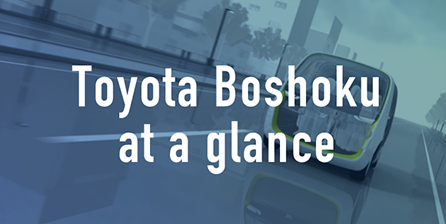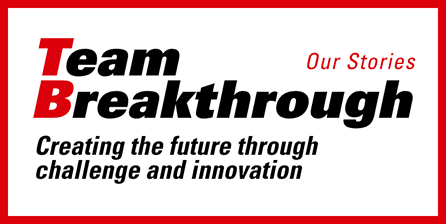Customer First, Quality First
Basic Stance
Based on the customer first philosophy originated from the Principles of Toyoda—being unified to make contributions for the world and for people—and our strengths related to MONOZUKURI cultivated for 100 years, the Toyota Boshoku group aims to become an Interior Space Creator by 2030. To achieve this goal, we are working to thoroughly implement quality first and develop human resources on a global scale. It is our mission to always consider matters from the customer’s perspective and position, to ensure safety and reassurance, and to provide customers with attractive and inspiring products and quality.
2030 Quality Roadmap
We collate quality issues (internal factors) and have identified tasks in the Quality Segment for the year 2030, based on a renewed understanding of the surrounding environment (external factors). Specific initiatives and goals have been set to accomplish these tasks. In order to achieve our desired status in the Quality Segment, drawn up based on our 2030 Target, we have established three initiatives linked to our materiality to improve the operational quality of all work and the quality of our products.
Quality Roadmap

- An award presented to companies that are implementing TQM and achieving outstanding results
- A business or region that is capable of creating added value on a Genchi-Genbutsu (go, see & study) basis and has competitive advantage compared to peers
- Total Quality Management
Aim to improve operational quality of all work by enhancing capabilities of “people,” “organization,” and “process,” in order to maintain a flexible and resilient corporate structure based on the Corporate Philosophy of “total participation,” “customer first,” and “continuous kaizen.”
Human Resources Development
The foundation of everything we do is the practice of the Principles of Toyoda, which clearly set out the thoughts of our founder, Sakichi Toyoda, and his attitude toward work. Through the promotion of TQM, we are passing on the cultivation of HITOZUKURI and a corporate culture in which Sakichi’s spirit of customer first and quality first can be realized in practice.
We define TQM as activities to enhance the vitality of company members and organizations, and, as our basic philosophy on TQM, promote its implementation based on the three pillars of customer first, continuous kaizen, and total participation, which result in “With your mind unified,” “For the world and for people,” and “Work honestly and conscientiously,” as stated in the Principles of Toyoda. In addition, by promoting TQM to change the way we have been working and strengthen the “organization,” “process,” and “people” that form our management foundation, we are also striving to improve the operational quality of all work. The “organization” needs to be able to execute corporate strategies for sustainable growth. For “process,” procedures used to realize business operations from the customer’s perspective are needed; and for “people,” the qualities and expertise required to carry out business operations and MONOZUKURI are required.
Improve operational quality of all work through implementation of TQM

We have defined the management skills, problem-solving skills, data utilization and quality management skills, and unique technologies and skills required for TQM, and are conducting systematic training.
In particular, to improve problem-solving skills, we are developing human resources who can enhance business processes based on Toyota Boshoku’s problem-solving methods by perpetuating the cycle of “knowledge acquisition (training),” “practice and application” through to “sharing of results.”

DX Deployment and Promotion
We are actively deploying and promoting DX. While utilizing DX to prevent quality fraud, we are making preparations to enable quality assurance that is equal to or better than the current state, even in the event that we have a low-headcount structure due to the shrinking working population.
DX promotion roadmap for quality assurance

- The quality of products and parts assembled in manufacturing to ensure safety and compliance with regulations
- Robotic Process Automation: Technology to automate processes using software robots
Global QA Structure through the CQO System
To provide high quality, high value-added products to our customers around the world, CQO*1 for each region, CQO for each area*2 within these regions, and related functional divisions cooperate to quickly resolve global issues, as well as localized issues that arise in specific regions.
- Chief Quality Officer
- Regional CQOs are established for each of the 5 global regions, and area CQOs are established based on the size of the region.
For more information, please see the following section on our CQO Promotion Structure.
Items being addressed in the CQO system
- Clarify the responsibilities of the Research & Development Unit and Functional Collaboration Unit, as well as each region. Strengthen cooperation, and promote global quality improvement activities to achieve “Customer First, Quality First.”
- Raise awareness of quality in each region and area, as well as each Research & Development Unit and Functional Collaboration Unit, and foster a culture in which top management itself takes the issue seriously.
CQO Promotion Structure






